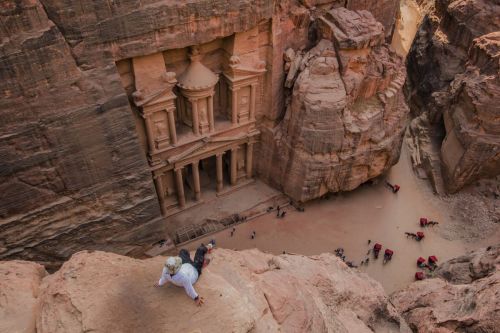At the lowest point on earth, one can float on the surface of the salty water and loll in the healing mud.
Christian pilgrims who came here in earlier centuries were so impressed by the lifelessness of the water that they called it the Dead Sea. There is practically no life in these waters, which are among the saltiest in the world. It is believed that the water of the lake probably cures many ailments.
Undoubtedly, this is an extremely interesting place, so we have compiled for you some interesting facts about the Dead Sea.
It lies on the border between Israel, Palestine and Jordan.
On the west side rise the steep cliffs of the reddish flint of the Judean Mountains, contrasting on the other side with the beige limestone rocks and the white salt desert. To the east, on the other hand, rise the purple-pink mountains of the biblical lands of Moab and Edom.
Although it is fed with turbid water by numerous large wadis flowing down from the surrounding mountains, the reservoir has no outflow.
The only tributary of the lake is the Jordan River, which does not actually flow into the lake because its waters are used by Israel and Jordan to irrigate the fields along the way.
The enormous evaporation due to the very high temperatures (almost 10 million tons of water per day), the very low rainfall (5 cm/m2 per year), the exploitation of minerals from the sea and the use of the Jordan River for the irrigation of fields cause the water level of the lake to drop by 1.5 meters every year.
Several sites on both shores of the body of water are candidates for the role of the "five cities of the plain": Sodom, Gomorrah, Admah, Zeboim and Zoara, which according to Genesis were destroyed by God (probably around 2300 BC). Excavations at one of these sites, Bab edh Dhra, uncovered massive city walls and a large cemetery; possibly Sodom was located here. Nearby are similarly situated ruins of perhaps Gomorrah.
As early as World War I, the British began mining salt here, which lasted until 1948. In addition to rock salt, large quantities of potassium salt are also extracted from the lake.
The waters of the lake contain an exceptional concentration of minerals, which have a healing effects on many skin diseases. Very popular is also the mud from the sea, which is used for baths, masks and poultices.
It was formed from organic sediments buried millions of years ago, which turned into asphalt over time. The sediments are located in faults at the bottom of the lake.
This is also said to be true for sumo athletes.









